

MISSION PATCHES SPACE
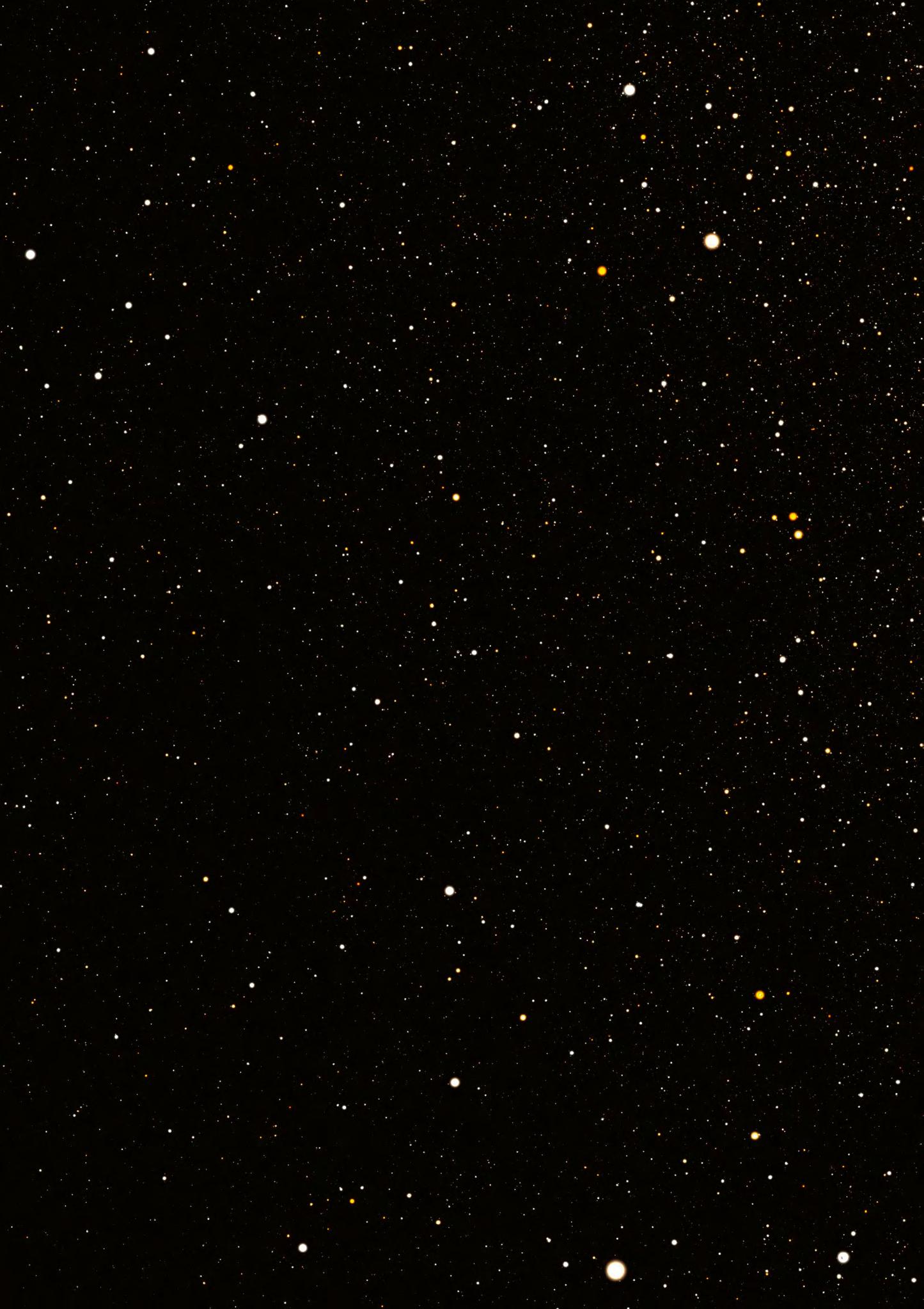
BILL SCHWARTZ


Chapter 1: A Series of Firsts
Mercury, Gemini, Apollo, Skylab, Apollo-Soyuz
Astronaut Alan Shepard successfully piloted the USA’s first human spaceflight. This was followed shortly after by Virgil ‘Gus’ Grissom’s Mercury 4 flight (1 July 1961).
The first American in orbit, astronaut John Glenn circled the Earth three times in just under five hours.
Astronaut Edward H. White became the first American to perform a spacewalk.
One of the darkest days in NASA’s history. A fire on the launch pad killed the crew of Apollo 1. The astronauts in question were Ed White, Virgil ‘Gus’ Grissom and Roger Chaffee.
The first people to orbit the Moon, the crew of Apollo 8 were returning from the dark side of the Moon when they saw the Earth emerging over the lunar horizon and took the worldchanging photograph that would become known as Earthrise
Astronauts Neil Armstrong and Edwin E. (Buzz) Aldrin became the first humans to walk on the Moon.
The unlucky Apollo 13 flight was afflicted with a torrent of malfunctions after an oxygen tank in the Odyssey command module ignited and blew up, prompting the crew to contact mission control with the haunting distress call: ‘Houston, we’ve had a problem’.
On this date, the final human visitors to the Moon took off from the lunar surface to return to Earth.
Skylab launched, becoming the first US space station.
Apollo-Soyuz linkup. The first international spaceflight. The American Apollo and Russian Soyuz crafts joined together in Earth orbit.

Skylab 1973
The mighty Skylab was America’s first orbital space station. The purpose was to test human responses to prolonged spaceflight, along with observations of various celestial bodies.
14 May 1973 Skylab

The first Skylab mission was uncrewed. Thereafter, there was some confusion with numerical identification which was changed at the last minute. As a result, mission patches representing crewed missions 2, 3 and 4 were designed as missions 1, 2 and 3.
28 Jul 1973 Skylab 3

The second crewed mission to Skylab entailed Alan Bean, Owen Garriott and Jack Lousma performing a variety of tasks, including scientific experiments, solar observations and medical projects, all of which amounted to over 1,000 hours of astronaut activity.
25 May 1973 Skylab 2

The first crewed mission to Skylab saw Pete Conrad, Joseph Kerwin and Paul Weitz take the record for the longest spaceflight at 28 days. Kerwin was chosen for his skills as a medical doctor with a view of getting a deeper understanding of the effect that spaceflight has on the human body.
16 Nov 1973 Skylab 4

This final crewed mission to Skylab lasted nearly three months. Astronauts Gerald Carr, Edward Gibson and William Pogue continued with the activities undertaken by the crew of the previous mission but were also tasked with observing the comet Kohoutek.

Apollo–Soyuz 1975
East met West in this historical show of peace and cooperation between rival superpowers.
15 Jul 1975
Apollo-Soyuz Test Project
The Apollo–Soyuz project was the first international crewed mission into space. Thomas Stafford, Vance Brand and Keke Slayton from the USA launched in an Apollo spacecraft to dock with the Soviet Soyuz capsule crewed by Alexei Leonov and Valery Kubasov. Essentially, this mission was a political act of peace amid Cold War tensions.



Chapter 2: Space Shuttles and Their Missions
Columbia, Challenger, Discovery, Atlantis, Endeavour
The first flight of NASA’s Columbia space shuttle. This was the administration’s first space shuttle flight and the first crewed American spaceflight since the Apollo-Soyuz linkup. Coincidentally, this date also marked the 20th anniversary of the firstever human spaceflight, which was undertaken by Yuri Gagarin for the former Soviet Union.
As a member of the Challenger shuttle crew, astronaut Sally Ride became the first American woman in space.
Astronaut Guion Bluford Jr. became the first African American in space.
An incident that shocked America. Just 73 seconds after launch, the Challenger shuttle exploded, killing all seven astronauts onboard. The icy conditions were found to be partly responsible. The space shuttle programme was immediately suspended.
The space shuttle programme returned when the Discovery (first launched in ’84) retook to the skies, with more than a million people gathered on beaches nearby to watch the launch.
Named after a 16th-century Portuguese explorer, the Magellan probe was released into outer space by the Atlantis shuttle and sent to map the surface of Venus.
Atlantis deployed the Galileo probe. Bound for Jupiter, the Galileo was the first craft to orbit an outer planet and the first to visit an asteroid.
The Endeavour shuttle (first launched just over a year earlier) carried the Spacehab into orbit for the first time. The commercially developed onboard lab doubled the available workspace for the crew.
Having already been the first woman to pilot a space shuttle (the Discovery in 1995), Eileen Collins became the first woman to command a space shuttle, taking charge of the Columbia on a five-day mission to deploy the Chandra X-Ray Observatory. This was also the shortest scheduled shuttle mission since 1990.
The Columbia was lost, disintegrating after re-entry into the Earth’s atmosphere. All seven crewmembers were killed. Damaged panels on the underside of the left wing caused a catastrophic failure. The Columbia was just 15 minutes from its scheduled landing at the Kennedy Space Center.
The end of the final space shuttle mission as the programme was brought to a close.
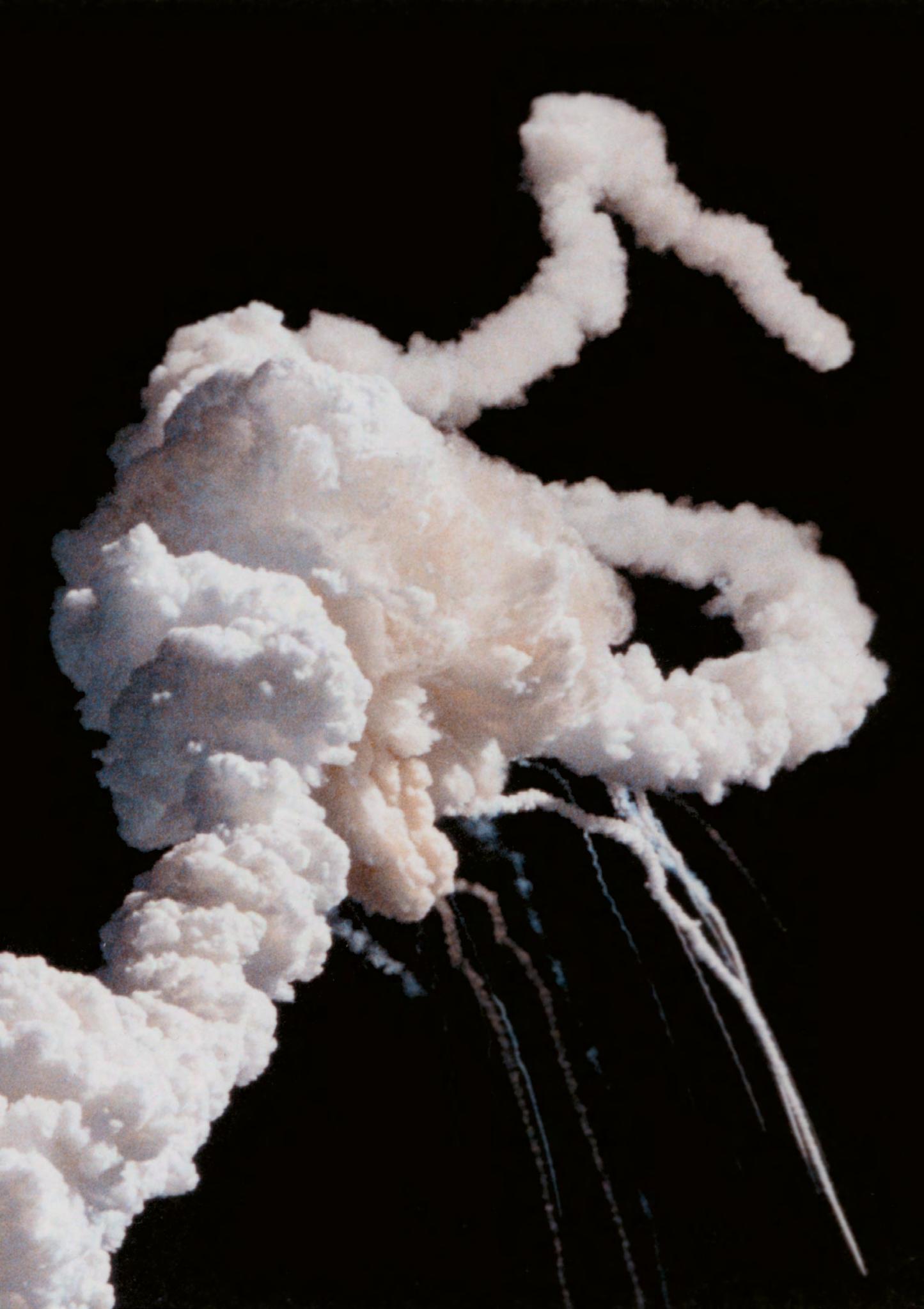

Space Shuttle Challenger 1983–86
Challenger was only ever intended as a test vehicle, but after an upgrade made it mission-ready, the orbiter rose to become leader of the shuttle fleet. During three years of service, Challenger completed 9 flights, carrying 60 different astronauts and spending almost 70 days in space before its tenth mission ended in disaster.
4 Apr 1983
STS-6: Challenger

The inaugural flight of Challenger was postponed due to a hydrogen leak in the main engine. The primary objective was the deployment of the first Tracking and Data Relay Satellite (TDRS-1). The crew were Paul Weitz, Karol Bobko, Donald Peterson and Story Musgrave.
30 Aug 1983
STS-8: Challenger
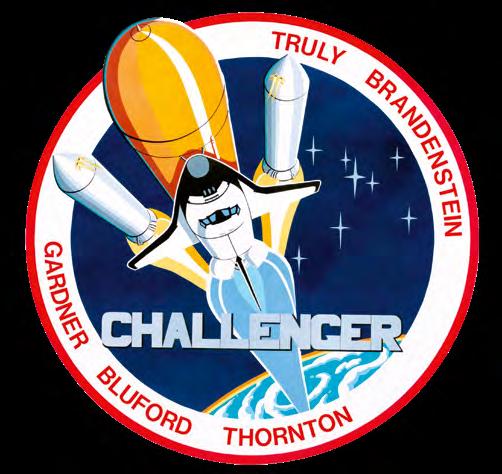
Guion Bluford Jr. became the first African American to fly in space. Richard Truly, Daniel Brandenstein, Dale Gardner and William Thornton made up the rest of the crew and the mission highlights included a test of the flight deck’s response to extreme cold, whereby the shuttle’s nose was aimed away from the sun for 14 hours.
18 Jun 1983
STS-7: Challenger

Mission specialist Sally Ride became the first US woman to fly in space. The other crew members were Robert Crippen, Frederick Hauck, John Fabian and Norman Thagard. The mission included the deployment of two coms satellites and an experiment studying the effects of zero gravity on the social behaviours of an ant colony.
3 Feb 1984
STS-41B: Challenger

Vance Brand, Robert Gibson, Bruce McCandless II, Ronald McNair and Robert Stewart took the Challenger space shuttle up for a little over a week, during which time McCandless and Stewart carried out the very first untethered spacewalks.


Space Shuttle Discovery 1984–2011
Discovery was NASA’s third space shuttle. Making its first public appearance during a special rollout ceremony on 16 October 1983, the orbiter outlived its predecessors and continued to ferry astronauts to and from outer space until the shuttle programme wrapped up in 2011.
30 Aug 1984
STS-41D: Discovery

Discovery's first flight with crew members Henry Hartsfield Jr., Michael Coats, Judith Resnik, Richard Mullane, Steven Hawley and Charles Walker. The payload included the 102-foot-tall OAST-1 solar wing, which carried an array of different solar cells.
24 Jan 1985
STS-51C: Discovery

8 Nov 1984
STS-51A: Discovery

12 Apr 1985
STS-51D: Discovery

US Senator E.J.
and an informal study was conducted into the behaviour of certain toys in space. Brake damage and a blown tire during landing led to changes in future landing protocols and equipment.
Frederick Hauck, David Walker, Anna Fisher, Dale Gardner and Joseph Allen crewed this mission, during which Allen and Gardner used jetpacks to retrieve two malfunctioning satellites.
The crew were Thomas Mattingly II, Loren Shriver, James Buchli, Ellison Onizuka and Gary Payton. Originally penned for Challenger, this mission was most notable for a handful of minor technical issues.
Karol Bobko, Donald Williams, Rhea Seddon, David Griggs, Jeffrey Hoffman and Charles Walker were joined onboard by
Garn

27 Aug 1985
STS-51I: Discovery

The crew were Joe Engle, Richard Covey, James van Hoften, John Lounge and William Fisher. The mission focused on the deployment, retrieval, repair and rerelease of various satellites.
13 Mar 1989
STS-29: Discovery

17 Jun 1985
STS-51G: Discovery
The 18th flight of the shuttle programme. The crew included Sultan Salman Al-Saud, along with Daniel Brandenstein, John Creighton, Shannon Lucid, Steven Nagel, John Fabian and Patrick Baudry. The primary objective was the deployment of ARABSAT-A for an Arabic communications network, along with two other coms satellites.
29 Sep 1988
STS-26: Discovery

The first time Discovery had flown since the Challenger disaster. Frederick Hauck, Richard Covey, David Hilmers, George (Pinky) Nelson and John Lounge crewed the four-day mission and suffered slightly adverse conditions onboard when a fluid cooling system iced up, causing the cabin temperature to rise to almost 300C.
22 Nov 1989
STS-33: Discovery

third night launch and the first since the shuttle programme’s restart in the
Michael Coats, John Blaha, James Bagian, Robert Springer and James Buchli crewed this mission to deploy another Tracking and Data Relay Satellite (TDRS).
The
wake of the Challenger disaster. Crewed by Frederick Gregory, John Blaha, Kathryn Thornton, Story Musgrave and Manley Carter Jr., it was also the fifth mission dedicated to the Department of Defense.
24 Apr 1990
STS-31: Discovery

A momentous occasion in the history of space exploration. The primary payload was the Hubble Space Telescope, which was successfully deployed into orbit. Loren Shriver, Charles Bolden Jr., Steven Hawley, Bruce McCandless II and Kathryn Sullivan crewed this important mission.
28 Apr 1991
STS-39: Discovery

A Department of Defense mission, carried out by Michael Coats, Blaine Hammond, Guion Bluford Jr., Gregory Harbaugh, Richard Hieb, Donald McMonagle and Charles Veach.
22 Jan 1992
STS-42:Discovery

The crew of Ronald Grabe, Stephen Oswald, Norman Thagard, David Hilmers, William Readdy, Roberta Bondar and Ulf Merbold were divided into two teams to make round-the-clock observations on the human nervous system and its adaptation to low gravity. They also monitored shrimp eggs, lentil seedlings, fruit fly eggs, and bacteria. The mission was extended by one day after mission managers concluded the onboard consumables remained at a suitable level.
6 Oct 1990
STS-41: Discovery

Built by ESA, the Ulysses probe was deployed on this mission to explore the sun’s polar regions. The crew members were Richard Richards, Robert Cabana, Bruce Melnick, Thomas Akers and William Shepherd.
12 Sep 1991
STS-48: Discovery

The main objective was the deployment of a research satellite. John Creighton, Kenneth Reightler Jr., Mark Brown, Charles Gemar and James Buchli were the crew members.
2 Dec 1992
STS-53: Discovery

classified DoD mission with crew members David
A
Walker, Robert Cabana, Guion Bluford Jr., James Voss and Michael Clifford, launched from the Kennedy Space Center.


Space Shuttle Atlantis 1984–2011
Another great survivor of the shuttle programme, Atlantis escaped a near-death experience on only its third mission and went on to be the very last space shuttle ever to fly. Safely touching down in Florida on the morning of 21 July 2011, the final Atlantis mission marked the conclusion of the space shuttle programme.
3 Oct 1985
STS-51J: Atlantis

2 Dec 1988
STS-27: Atlantis

26 Nov 1985
STS-61B: Atlantis

4 May 1989
STS-30: Atlantis

The first flight of the Atlantis was a classified DoD mission, crewed by Karol Bobko, Ronald Grabe, Robert Stewart, David Hilmers and William Pailes.
A mission to deploy three coms satellites with crew members Brewster Shaw, Bryan O’Connor, Mary Cleave, Sherwood Spring, Jerry Ross, Rodolpho Neri Vela and Charles Walker.
Debris from the solid rocket booster struck Atlantis during takeoff, causing critical damage to around 700 heat-shield tiles. The classified nature of this DoD mission complicated in-flight efforts to assess the damage. It is believed that the crew of Robert Gibson, Guy Gardner, Jerry Ross, William Shepherd and Richard Mullane were extremely fortunate to survive re-entry and return home safely.
Deployment of the Magellan spacecraft, which began its 15-month voyage to the planet Venus. Crew members were David Walker, Ronald Grabe, Norman Thagard, Mary Cleave and Mark Lee.
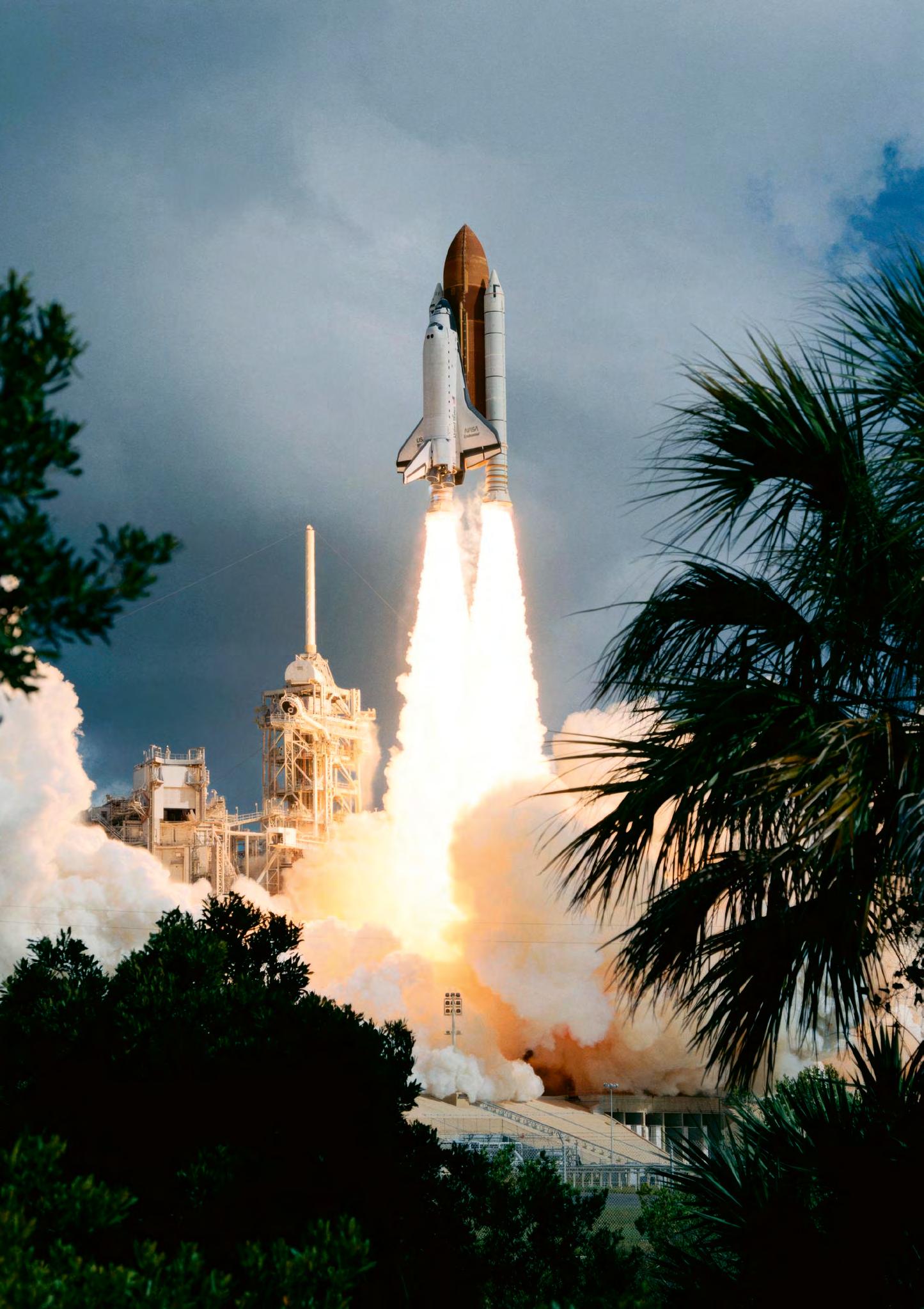

Space Shuttle Endeavour 1992–2011
Endeavour was the fifth and final orbiter to join the space shuttle fleet. Replacing the lost Challenger, Endeavour completed a total of 25 missions, became the first shuttle to service the ISS and survived to the end of the space shuttle programme, flying for the final time in May 2011.
7 May 1992
STS-49: Endeavour
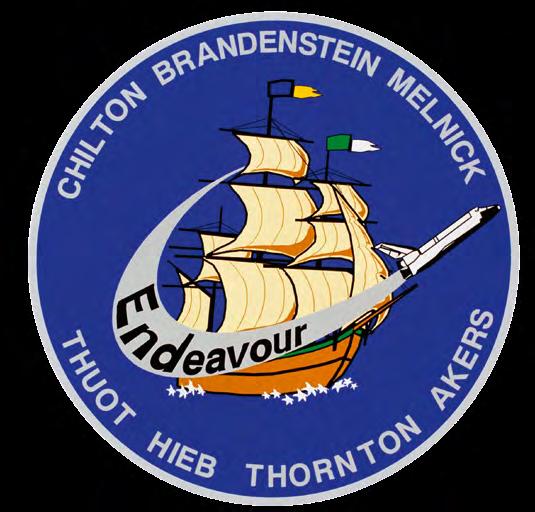
The maiden flight of Endeavour. The crew of Daniel Brandenstein, Kevin Chilton, Pierre Thuot, Kathryn Thornton, Richard Hieb, Thomas Akers and Bruce Melnick recaptured the Intelsat VI, which had been stranded since its launch in 1990. They carried out repairs and relaunched it into a functional orbit.
13 Jan 1993
STS-54: Endeavour

12 Sep 1992
STS-47: Endeavour

Spacelab-J was a joint NASA and NASDA (Japanese space agency) mission focused on microgravity and life sciences. The latter involved tests carried out on the crew of Robert Gibson, Curtis Brown Jr., Mark Lee, Jan Davis, Jay Apt, Mae Jemison and Mamoru Mohri, several Japanese Koi carp, chicken embryos, fruit flies, fungi seeds, frogs and frogspawn. It was the first time that a Japanese astronaut (Mohri), an African American woman (Jemison) and a married couple (Davis and Lee – the first and only) had flown on a shuttle mission.
21 Jun 1993
STS-57: Endeavour

The first flight of Spacehab - a large, commercially developed, pressurised laboratory. Launch was rescheduled several times, including because a loud noise was heard after the shuttle arrived at the pad (later attributed to a ball joint inside a hydrogen tank). The crew were Ronald Grabe, Brian Duffy, David Low, Nancy Sherlock, Peter Wisoff and Janice Voss.
Mission to deploy the TDRS-F with crew members John Casper, Donald McMonagle, Mario Runco, Gregory Harbaugh and Susan Helms.



Chapter 3: International Space Station
The International Space Station is the largest of its kind ever built. Circling in low Earth orbit, the station is a collaboration between five space agencies from around the world: NASA (USA), Roscosmos (Russia), JAXA (Japan), ESA (Europe) and CSA (Canada). It is primarily for the purpose of space environment experiments.

























Chapter 4: The Future of Spaceflight
SpaceX, Artemis
The launch of the first commercial resupply mission to the ISS, which was undertaken by the SpaceX Dragon, nicknamed the Endeavour.
The new Artemis programme was announced.
NASA launched the powerful James Webb Space Telescope, allowing humanity to see further into the cosmos than ever before.
Artemis I. The first flight of the Artemis programme saw an uncrewed Orion spacecraft complete a lunar orbit before splashing down safely off the coast of Baja California, Mexico.

Robert Behnken and Doug Hurley flew this mission to test and validate the SpaceX human transport systems for use in future NASA programmes. They named this Dragon vehicle 'Endeavour' after the shuttle that first flew them both into space.

The first test flight of the Orion spacecraft and SLS rocket. Uncrewed, Orion flew far beyond the Moon before circling back to Earth.

SpaceX 2020–ongoing
Founded in 2002 by Elon Musk, SpaceX has been credited with launching an era of commercial spaceflights. It was the first private company to successfully dock a crewed spacecraft with the ISS. The company’s aims include establishing a colony on Mars and carrying humans to other destinations in the solar system.
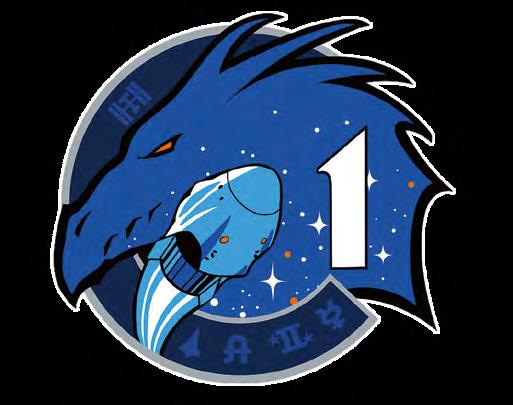

Commercial Crew programme established a tradition of the
naming their spacecraft and, for this third mission (and fifth flight overall), Raja Chari, Thomas Marshburn, Matthias Maurer and Kayla Barron named their vehicle 'Endurance' in honour of the NASA and SpaceX teams who had



less water and fewer pesticides



2020 SpaceX Crew 1
The first long-duration mission of the Commercial Crew programme saw NASA’s Mike Hopkins, Shannon Walker, Victor Glover and JAXA’s Soichi Noguchi fly SpaceX’s Dragon spacecraft to the ISS.
2020 SpaceX Crew 2
The second ISS crew flight using the Dragon. Astronauts Shane Kimbrough, Megan McArthur, Thomas Pesquet and Akihiko Hoshide conducted various studies once aboard the ISS, including a test of cotton growth in microgravity in an attempt to identify varieties that may require
to thrive.
2021 SpaceX Crew 3
The
crew
endured throughout the COVID-19 pandemic to complete the manufacture of the craft and train the astronauts who flew it to the ISS.
2022 SpaceX Crew 4
Another new Dragon craft, this time named 'Freedom', was flown to the ISS, carrying Kjell Lindgren, Bob Hines, Jessica Watkins and Samantha Cristoforetti.
2022 SpaceX Crew 5
The second mission for the SpaceX Dragon Endurance, ferrying Nicole Anapu Mann, Josh Cassada, Koichi Wakata and Anna Kikina to the ISS.
2023 SpaceX Crew 6
A United Arab Emirates astronaut, Sultan Al Neyadi, joined Stephen Bowen and Warren Hoburg from NASA and Andrey Fedyaev from Russia aboard this flight to the ISS.
2023 SpaceX Crew 7
A fully multinational mission to the ISS, the Dragon Endurance successfully delivered NASA’s Jasmin Moghbeli, ESA’s Andreas Mogensen, JAXA’s Satoshi Furukawa and Roscosmos’s Konstantin Borisov to the station.
2024 SpaceX Crew 8
A fourth flight for the SpaceX Dragon Endeavour, transporting Matthew Dominick, Michael Barratt, Jeanette Epps and Alexander Grebenkin to the ISS.
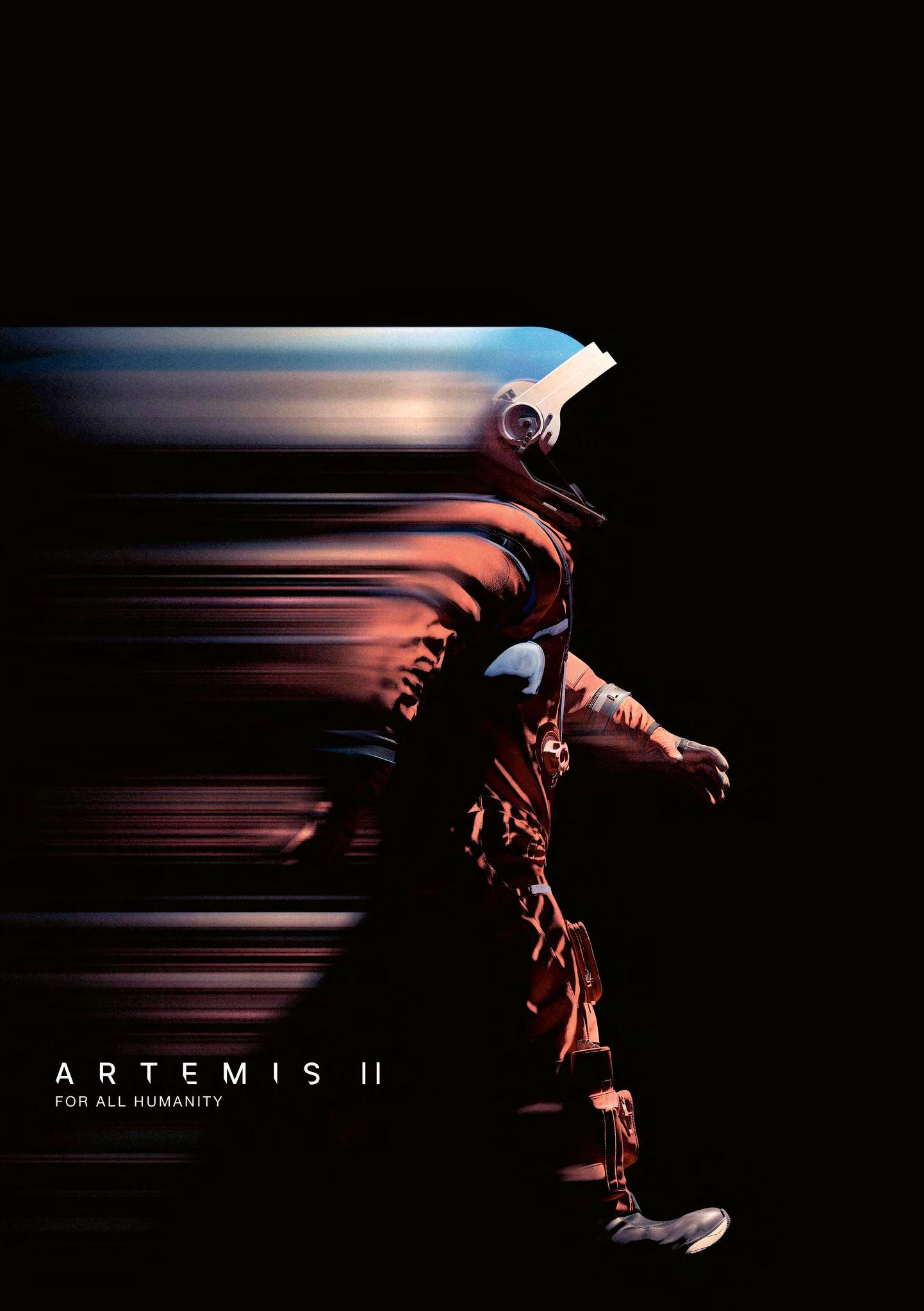

Artemis Programme 2017–ongoing
NASA’s Artemis programme has the dual purpose of sending humanity back to the Moon to establish our first long-term presence on the lunar surface, while simultaneously advancing plans for the eagerly anticipated missions to Mars.
Discover the striking artistry of NASA’s mission patches.
Over 200 mission patches are featured in these pages, delivering a stunning visual tour of NASA’s symbols, from the early Mercury missions of the 1960s to the rovers, orbital telescopes and brand-new lunar capsules of the 2020s.
Continuing the popular Art About NASA series, this meeting of art and exploration is the definitive testament to NASA’s trailblazing journeys into the unknown.


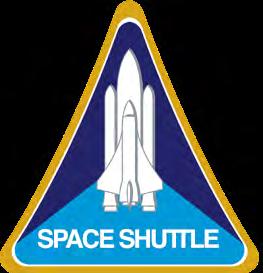



ISBN: 978-1-78884-289-1


